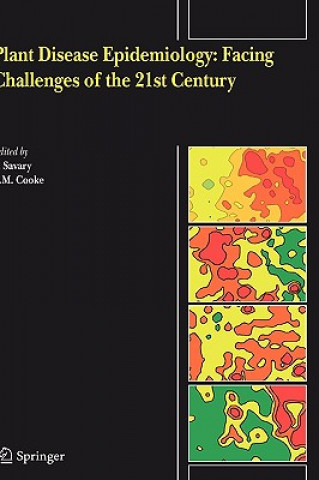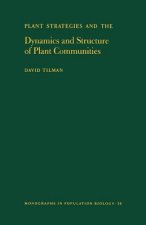
Kód: 01416815
Plant Disease Epidemiology: Facing Challenges of the 21st Century
Autor S. Savary, B.M. Cooke
Plant disease epidemiology deals with diseases in plant populations. During the past century, it has become a vibrant field of science, achieving significant conceptual innovations with an important impact on the management of pla ... celý popis
- Jazyk:
 Angličtina
Angličtina - Väzba: Pevná
- Počet strán: 138
Nakladateľ: Springer-Verlag New York Inc., 2006
- Viac informácií o knihe

139.60 €

Skladom u dodávateľa v malom množstve
Odosielame za 12 - 17 dní
Potrebujete viac kusov?Ak máte záujem o viac kusov, preverte, prosím, najprv dostupnosť titulu na našej zákazníckej podpore.
Pridať medzi želanie
Mohlo by sa vám tiež páčiť
-

Categorical Data Analysis, 3e
228.10 € -

Cooperative Design, Visualization, and Engineering
70.87 € -

Literary Education
53.05 € -

Level 5: Rebecca Book and MP3 Pack
12.59 € -10 % -

Darkness Devours
13 € -

Skripta Y
10.44 € -5 % -

Berliner Platz 3 Intensivtrainer
7.57 € -4 %
Darčekový poukaz: Radosť zaručená
- Darujte poukaz v ľubovoľnej hodnote, a my sa postaráme o zvyšok.
- Poukaz sa vzťahuje na všetky produkty v našej ponuke.
- Elektronický poukaz si vytlačíte z e-mailu a môžete ho ihneď darovať.
- Platnosť poukazu je 12 mesiacov od dátumu vystavenia.
Viac informácií o knihe Plant Disease Epidemiology: Facing Challenges of the 21st Century
Nákupom získate 345 bodov
 Anotácia knihy
Anotácia knihy
Plant disease epidemiology deals with diseases in plant populations. During the past century, it has become a vibrant field of science, achieving significant conceptual innovations with an important impact on the management of plant diseases. Plant disease epidemiology mobilises concepts and methods from ecology, genetics, environmental physics, botany, and mathematics. It deals with cultivated and non-cultivated plants in environments where human activities may have had an impact. Now, plant disease epidemiology faces important questions. Global climate is changing at a rapid rate: will it render plant diseases more, or less, harmful to man-made ecosystems? There is much debate on this issue, partly because climate has sometimes very large effects on the local environment of growing plant canopies, and because the physical micro-environment so strongly influences plant diseases and their consequences on ecosystem functioning and performance and the way they are managed. Plant disease epidemiologists have a strong scientific tradition in studying climate-pathogen-disease relationships. Biodiversity is also of global concern. The decline of global biodiversity that is currently taking place has been referred to as the sixth great extinction process our planet has experienced during its history, but this time, it is man-made. Generations of plant pathologists, and especially, of plant disease epidemiologists, have been dealing with biodiversity. It is from this diversity that presumably the most potent instrument for disease management has been developed by plant pathologists: host plant resistance. Host plant diversity, and the disease resistance genes it harbours, can be deployed over time and space, according to epidemiological principles. Sustainable production and protection systems also need to be devised which could exploit scarcer resources sparingly, and if possible enhance the resource base. Plant disease epidemiologists alone cannot provide answers to such questions, but certainly could significantly contribute to these new strategies. This book provides an overview of some of the latest research in plant disease epidemiology from researchers at the cutting edge of this important discipline.As the global climate changes, plant disease epidemiology faces important questions: Will climate change render plant diseases more harmful to man-made ecosystems, or less? Can sustainable systems be developed in time to spare and enhance shrinking resources? How will changes in host plant diversity affect genetic disease resistance? This book provides an overview of current research in plant disease epidemiology from researchers at the cutting edge of this important discipline.Plant disease epidemiology deals with diseases in plant populations. During the past century, it has become a vibrant field of science, achieving significant conceptual innovations with an important impact on the management of plant diseases. Plant disease epidemiology mobilises concepts and methods from ecology, genetics, environmental physics, botany, and mathematics. It deals with cultivated and non-cultivated plants in environments where human activities may have had an impact. Now, plant disease epidemiology faces important questions. Global climate is changing at a rapid rate: will it render plant diseases more, or less, harmful to man-made ecosystems? There is much debate on this issue, partly because climate has sometimes very large effects on the local environment of growing plant canopies, and because the physical micro-environment so strongly influences plant diseases and their consequences on ecosystem functioning and performance and the way they are managed. Plant disease epidemiologists have a strong scientific tradition in studying climate-pathogen-disease relationships. Biodiversity is also of global concern. The decline of global biodiversity that is currently taking place has been referred to as the sixth great extinction process our planet has experienced during its history, but this time, it is man-made. Generations of plant pathologists, and especially, of plant disease epidemiologists, have been dealing with biodiversity. It is from this diversity that presumably the most potent instrument for disease management has been developed by plant pathologists: host plant resistance. Host plant diversity, and the disease resistance genes it harbours, can be deployed over time and space, according to epidemiological principles. Sustainable production and protection systems also need to be devised which could exploit scarcer resources sparingly, and if possible enhance the resource base. Plant disease epidemiologists alone cannot provide answers to such questions, but certainly could significantly contribute to these new strategies. This book provides an overview of some of the latest research in plant disease epidemiology from researchers at the cutting edge of this important discipline. §Reprinted from European Journal of Plant Pathology, Volume 115, No. 1, 2006
 Parametre knihy
Parametre knihy
Zaradenie knihy Knihy po anglicky Mathematics & science Biology, life sciences Botany & plant sciences
139.60 €
- Celý názov: Plant Disease Epidemiology: Facing Challenges of the 21st Century
- Podnázov: Under the aegis of an International Plant Disease Epidemiology Workshop held at Landernau, France, 10-15th April, 2005
- Autor: S. Savary, B.M. Cooke
- Jazyk:
 Angličtina
Angličtina - Väzba: Pevná
- Počet strán: 138
- EAN: 9781402050190
- ISBN: 1402050194
- ID: 01416815
- Nakladateľ: Springer-Verlag New York Inc.
- Hmotnosť: 860 g
- Rozmery: 235 × 155 × 13 mm
- Dátum vydania: 18. July 2006
Obľúbené z iného súdka
-

Hartmann & Kester's Plant Propagation: Principles and Practices
94.02 € -

Bogs & Fens - A Guide to the Peatland Plants of the Northeastern United States and Adjacent Canada
31.84 € -

Raven Biology of Plants
108.97 € -

Teaming with Nutrients
20.99 € -20 % -

Plant Systematics
112.15 € -

Finding the Mother Tree
12.90 € -24 % -

Introduction to Plant Structure and Development
105.59 € -

Cacti
103.24 € -

RSPB Nature Tracker's Handbook
18.73 € -13 % -

Plants from Test Tubes : An Introduction to Micropropagation
28.57 € -19 % -

Plant Pathology
90.02 € -3 % -

Native American Ethnobotany
74.56 € -7 % -

Succulent Flora of Southern Africa
27.85 € -2 % -

Physicochemical and Environmental Plant Physiology
142.26 € -

Metamorphosis of Plants
33.38 € -13 % -

Plant Ecology
101.60 € -

Plant Pathology and Plant Diseases
81.11 € -

Orchids of Tropical America
25.29 € -18 % -

Rare and Exotic Orchids
57.25 € -

Big, Bad Book of Botany
16.99 € -20 % -

Applied Tree Biology
108.87 € -

Plant Systematics
276.03 € -

Great Cacti
88.08 € -

Plant Strategies and the Dynamics and Structure of Plant Communities. (MPB-26), Volume 26
104.06 € -

Plants and Microclimate
84.80 € -

Wood - The Internal Optimization of Trees
202.18 € -

The Citron Compendium
49.05 € -14 % -

In Praise of Plants
26.72 € -

From Plant Traits to Vegetation Structure
89.61 € -

RHS Genealogy for Gardeners
22.01 € -23 % -

Comfortably Unaware
16.17 € -1 % -

Darwin's Most Wonderful Plants
11.36 € -13 % -

Maria Sibylla Merian
20.78 € -17 % -

Plant Behaviour and Intelligence
82.65 € -

Alexander von Humboldt
78.76 € -

Plant Hormones
318.95 € -3 % -

Brilliant Green
14.53 € -40 % -

Animal, Vegetable, Miracle
14.43 € -23 % -

Flowers of Greece and the Balkans
115.02 € -

Plants: A Very Short Introduction
11.56 € -19 % -

Tropical Fruits and Other Edible Plants of the World
49.16 € -

Flora of Madeira
160.39 € -

Plant Biology
103.34 € -

What a Plant Knows
17.81 € -7 % -

Atlas of Poetic Botany
22.63 € -14 % -

Moss Flora of Britain and Ireland
236.09 € -

Textbook of Pollen Analysis
89.51 € -

Field Guide to Plants of Costa Rica
42.40 € -3 % -

Wild Garden
52.13 €
Osobný odber Bratislava a 2642 dalších
Copyright ©2008-24 najlacnejsie-knihy.sk Všetky práva vyhradenéSúkromieCookies


 21 miliónov titulov
21 miliónov titulov Vrátenie do mesiaca
Vrátenie do mesiaca 02/210 210 99 (8-15.30h)
02/210 210 99 (8-15.30h)